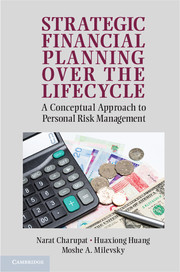The Capital Asset Pricing Model in the 21st Century
The Capital Asset Pricing Model (CAPM) and the mean-variance (M-V) rule, which are based on classic expected utility theory, have been heavily criticized theoretically and empirically. The advent of behavioral economics, prospect theory and other psychology-minded approaches in finance challenges the rational investor model from which CAPM and M-V derive. Haim Levy argues that the tension between the classic financial models and behavioral economics approaches is more apparent than real. This book aims to relax the tension between the two paradigms. Specifically, Professor Levy shows that although behavioral economics contradicts aspects of expected utility theory, CAPM and M-V are intact in both expected utility theory and cumulative prospect theory frameworks. There is furthermore no evidence to reject CAPM empirically when ex-ante parameters are employed. Professionals may thus comfortably teach and use CAPM and behavioral economics or cumulative prospect theory as coexisting paradigms.
- Provides a novel perspective on the tension between traditional and behavioral financial models
- Bridges behavioral economics and the classical models in finance to show that there is no contradiction between them
- Celebrated author Levy has written or co-authored more than twenty titles in finance including three textbooks
Reviews & endorsements
'Currently, trillions of dollars are managed with the aid of quantitative techniques. Major paradigms of quantitative finance include expected utility theory, mean-variance optimization, the closely-related capital asset pricing model, prospect theory, and (Professor Levy's own creation) stochastic dominance. In this book, Professor Levy presents a penetrating analysis of the relationships among these paradigms, often finding mutual support where others find only conflict.' Harry Markowitz, Nobel Laureate, University of California, San Diego
'Levy's book should be required reading for anyone who wants to learn about asset pricing; it is also an essential reference for anyone who wants to contribute to the immense literature in the field, the most important subject in the entire field of finance.' Richard Roll, University of California, Los Angeles
'Here in one volume is a presentation, analysis, and discussion of some of the key pillars of modern financial theory: mean-variance analysis, the capital asset pricing model, expected utility theory, and cumulative prospect theory. Haim Levy presents each theory carefully and completely, discusses the relevant arguments and evidence, and argues convincingly that practitioners and academics should adopt a synthesis that incorporates major elements of these approaches. A real tour de force from one of the major contributors to the field.' William F. Sharpe, Nobel Laureate, Stanford University
Product details
February 2012Paperback
9780521186513
456 pages
229 × 152 × 23 mm
0.6kg
63 b/w illus. 32 tables
Available
Table of Contents
- 1. Overview
- 2. Expected utility theory
- 3. Expected utility and investment decision rules
- 4. The mean-variance rule
- 5. The capital asset pricing model (CAPM)
- 6. Extensions of the CAPM
- 7. The CAPM cannot be rejected: empirical and experimental evidence
- 8. Theoretical and empirical criticisms of the M-V rule
- 9. Prospect theory and expected utility
- 10. Cumulative decision weights: no dominance violation
- 11. M-V rule, the CAPM, and the cumulative prospect theory: coexistence.







